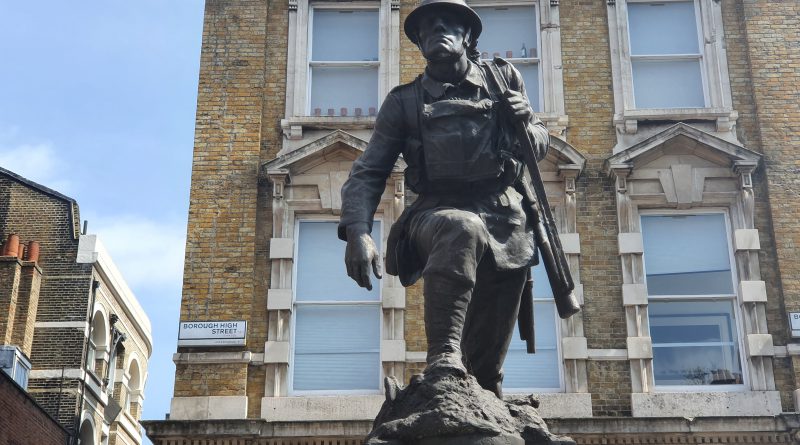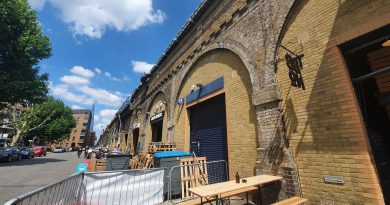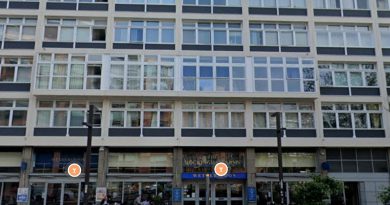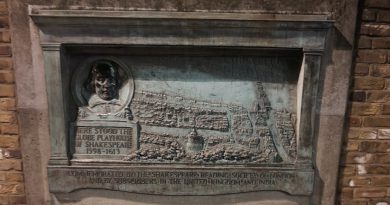London – Southwark (Borough of) – St Saviour’s War Memorial
There’s a Wikipedia page to this monument on Borough High Street that gives more information than I can here, but this is one of the more striking war memorials that I’ve seen. The monument, which was funded by public subscription, was unveiled in November 1922 and is on a base of Portland stone with a bronze sculpture on the top.
The bronze sculpture was designed by Philip Lindsey Clark (1889-1977) who has a distinguished war record of his own, winning the DSO. The unveiling of the memorial was overseen by General Lord Horne, a Commander of the British First Army during the First World War, but the Bishop of Southwark was ill, so the dedication was performed by the Bishop of Woolwich. There was singing led by the choir of Southwark Cathedral and the Last Post and the Reveille were played by the Life Guards. Lord Horne gave a little ‘motivational’ speech saying that nine out of ten of those men who were dying on the frontline had said as their last words that they wanted someone to look after their wife and family.
This finely decorated bronze tablet shows battleships with another tablet on the other side showing planes.
The memorial was removed for an extensive restoration in 2013, being returned in the following year. The memorial is now Grade II* listed with the architectural listing mentioning:
“* a well-executed war memorial of striking composition using high quality materials and demonstrating excellent craftsmanship;
* a fine example of the work of the distinguished sculptor Philip Lindsey Clark with bronze figural sculpture and reliefs of exceptional quality;
* it is relatively uncommon with First World War memorials to feature the role of the air services in combat; by including a bronze relief of an air combat scene, St Saviour’s war memorial demonstrates the growing importance of the use of aviation in combat in the First World War.”








